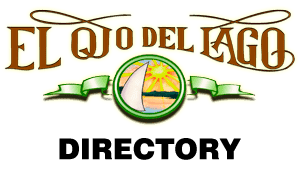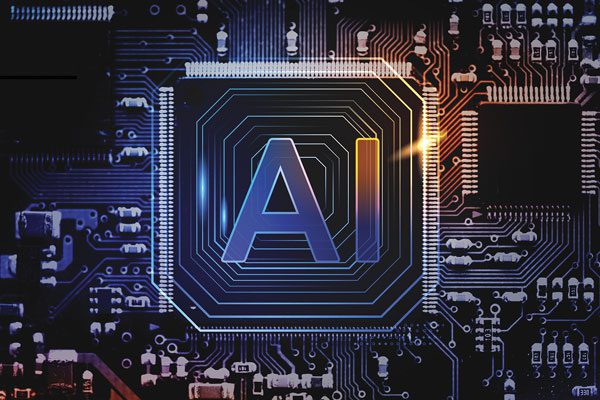The Ajijic Startup Studio Vision

What if the same vibrant energy that brought us all to Ajijic could be channeled into something bigger? What if our community became a global hub for innovation? In this article, we will present a view of the opportunities and challenges of the so-called “Silver Economy,” and why our lakeside ecosystem can play an important role in the development of applications and solutions that will contribute to successful aging.
The world is in the midst of a profound and irreversible demographic transformation. The aging of its population, a phenomenon often termed the “Silver Tsunami,” presents a dual reality that will define the social and economic landscape for the 21st century. On one side, this shift poses significant fiscal and social challenges, including immense strain on bedrock entitlement programs, a burgeoning public health crisis centered on caregiver burnout, and the complex task of financing long-term care for millions. On the other side, it is fueling the rapid emergence of a vibrant “Longevity Economy,” a multi-trillion-dollar marketplace of products and services designed to meet the diverse needs and aspirations of older adults. In response, the market is rapidly evolving. The Longevity Economy, valued at over $8 trillion, is seeing explosive growth in sectors like AgeTech, senior housing, and home-based care. The powerful consumer desire to “age in place” is the central force shaping this marketplace, creating massive opportunities for industries that can solve the “last mile” problem of delivering care, services, and technology directly into the home.
Traditional perspectives on aging frequently centered on an inevitable trajectory of decline. However, contemporary social views present a more nuanced understanding, emphasizing the significant variability in later-life experiences both within and between individuals. This modern view acknowledges that a reduction in function in one area does not necessarily preclude gains or maintenance in another. This recognition represents a fundamental shift in how aging is perceived, moving from a deficit-oriented model to one that highlights strengths and continuous development. The implication of this shift is profound: maintaining relevance in later life is not about avoiding the natural processes of aging, but rather about actively engaging with them through adaptation, compensation, and seeking new avenues for growth, rather than passively accepting a narrative of inevitable decline.
A key aspect of this evolving understanding is the concept of “plasticity” in human development, which has become increasingly evident in research. This refers to the remarkable ability of older adults to adapt to and compensate for losses in certain cognitive dimensions. For example, the scaffolding theory of aging and cognition suggests that older adults develop compensatory neural circuitry, or “scaffolds,” which they can utilize to maintain a certain level of cognitive function even when facing pathological changes in brain structure. This capacity for adaptation means that human development is understood as a lifelong process, with early life events exerting an influence throughout the entire life course. This perspective underscores that aging is not a static endpoint but a continuous journey of adaptation, learning, and growth, where individuals can actively shape their experiences and continue to find meaning and purpose.
Remaining a relevant human being at old age is not a singular achievement but an ongoing, dynamic process that seamlessly integrates physical, cognitive, social, emotional, and purposeful dimensions of life. By proactively embracing these evidence-based strategies – engaging in consistent physical activity, nourishing the body with appropriate nutrition, stimulating the mind through continuous learning, cultivating meaningful social connections, actively pursuing and finding purpose, and fostering a resilient and adaptable mindset – older adults can not only mitigate the challenges associated with aging but also thrive. These actions empower individuals to maintain their independence, contribute meaningfully to their communities, and experience profound satisfaction and self-worth. Ultimately, relevance in old age is characterized by continuous engagement with life, a willingness to embrace change, and the strategic leveraging of a lifetime of accumulated experience and wisdom to continue growing, contributing, and finding fulfillment.
The demographic shift presents significant opportunities:
Massive Market Size and Purchasing Power: The “silver generation” represents a colossal and growing market. They often have significant disposable income and are willing to spend on products and services that enhance their quality of life, health, and well-being.
Innovation and New Industries: The specific needs of older adults drive innovation across various sectors, leading to the development of new products, services, and technologies, such as Geron technology (technology for the elderly), smart home solutions, e-health, assistive devices, and age-friendly urban design.
Job Creation: The growing demand within the silver economy creates new jobs, particularly in service-oriented sectors like care, healthcare, personalized services, and leisure. It can also lead to the emergence of new professions.
Extended Working Lives and Increased Productivity: Healthier aging means many older adults are capable and willing to work longer. Policies that support active aging, lifelong learning, and flexible work arrangements can boost labor force participation and enhance productivity.
Boom in Specific Sectors: Industries like healthcare, pharmaceuticals, tourism (senior travel), financial services (retirement planning, wealth management), housing (senior living communities), transportation, and leisure activities are experiencing significant growth due to the silver economy.
Technological Advancements: The silver economy is a key driver for advancements in areas like AI, IoT, robotics, and telemedicine, which can enhance the independence, safety, and social connection of older individuals.
Intergenerational Collaboration: The silver economy encourages intergenerational approaches, where companies and communities can foster environments where different age groups work and live together, leveraging the experience of older workers and the fresh perspectives of younger generations.
Focus on Quality of Life: The shift emphasizes not just extending lifespan, but improving the quality of life in later years, leading to a greater focus on well-being, active lifestyles, social engagement, and personal fulfillment for older adults.
Our lakeside community has enormous strengths and components that can foster the development of novel AI-driven technological applications and social solutions to enhance our lives: A large, vibrant expat population with individuals that came from diverse sorts of lives with a large baggage of experience and knowledge including doctors, scientists, engineers, and business people, among others, and in some cases with financial wealth and time on their sides. We really have an ideal demographic – a high concentration of active, tech-savvy, and engaged seniors who can serve as beta testers advisors, and users. We also have local technical educational institutions at the lakeside, and a vast technology ecosystem in nearby Guadalajara. This is the perfect mixture to tap into the huge opportunities of the silver economy. But something else is needed: An agglutinating organization that can bring together the talents and resources needed to bring to life applications and solutions for the silver population. To start exploring some of the ideas presented here, we invite everyone interested in participating to attend the following free event:
Title: Bridges of Life
Description: Connecting ideas, people, and experiences to design a meaningful future.
“Bridges of Life” is a collaborative board game designed for people aged 50+ who want to explore and share their vision of the future across five key dimensions:
Mindset & Purpose
Housing & Community
Finances & Future
Health & Well-being
Connection & Legacy
Players build metaphorical bridges between their life experiences and the futures they wish to create – discovering common values, generating ideas, and forging meaningful relationships along the way.
Location: La Bodega de Ajijic
“16 de Septiembre” St. No 124
Date: November 11 at 11AM
Let’s have brunch together!
Organizers: Morris Schwarzblat y Jorge Zavala
Jorge Zavala from Silicon Valley and I have created the Ajijic Startup Studio to tap into the opportunities of the silver economy, where all the participants can profit and thrive. It is not a single startup, but a company that creates and launches multiple startups in a specific area (in this case, senior tech) and provides mentorship and a clear path to market.
Imagine a future where technology isn’t just fast or fancy, but truly feels like an extension of ourselves, built with our lives and needs at its very core. That’s the vision of the Ajijic Startup Studio, and we invite our entire community to embrace this exciting journey with us.
We’re not chasing the next fleeting trend from Silicon Valley. Our focus is on “technology with heart” –innovations that are intuitive, accessible, and genuinely helpful. Picture tools that seamlessly integrate into your daily life, bridging gaps and enhancing experiences for everyone, regardless of age or tech savviness. This isn’t about profit over people; it’s about empowerment through thoughtful design.
The Ajijic Startup Studio is a commitment to building technology by and for the people who will actually use it. We believe the most impactful solutions emerge when local insights meet global expertise. This is our chance to cultivate a hub of creativity and innovation right here in Ajijic, fostering a collaborative environment where ideas flourish and become reality.
Join us in shaping a future where technology serves humanity with compassion and purpose. Together, we can create a legacy of innovation that truly matters.
- Technology with Heart - October 30, 2025


 Discover trusted local services and hidden gems with our easy-to-use online directory.
Discover trusted local services and hidden gems with our easy-to-use online directory.

